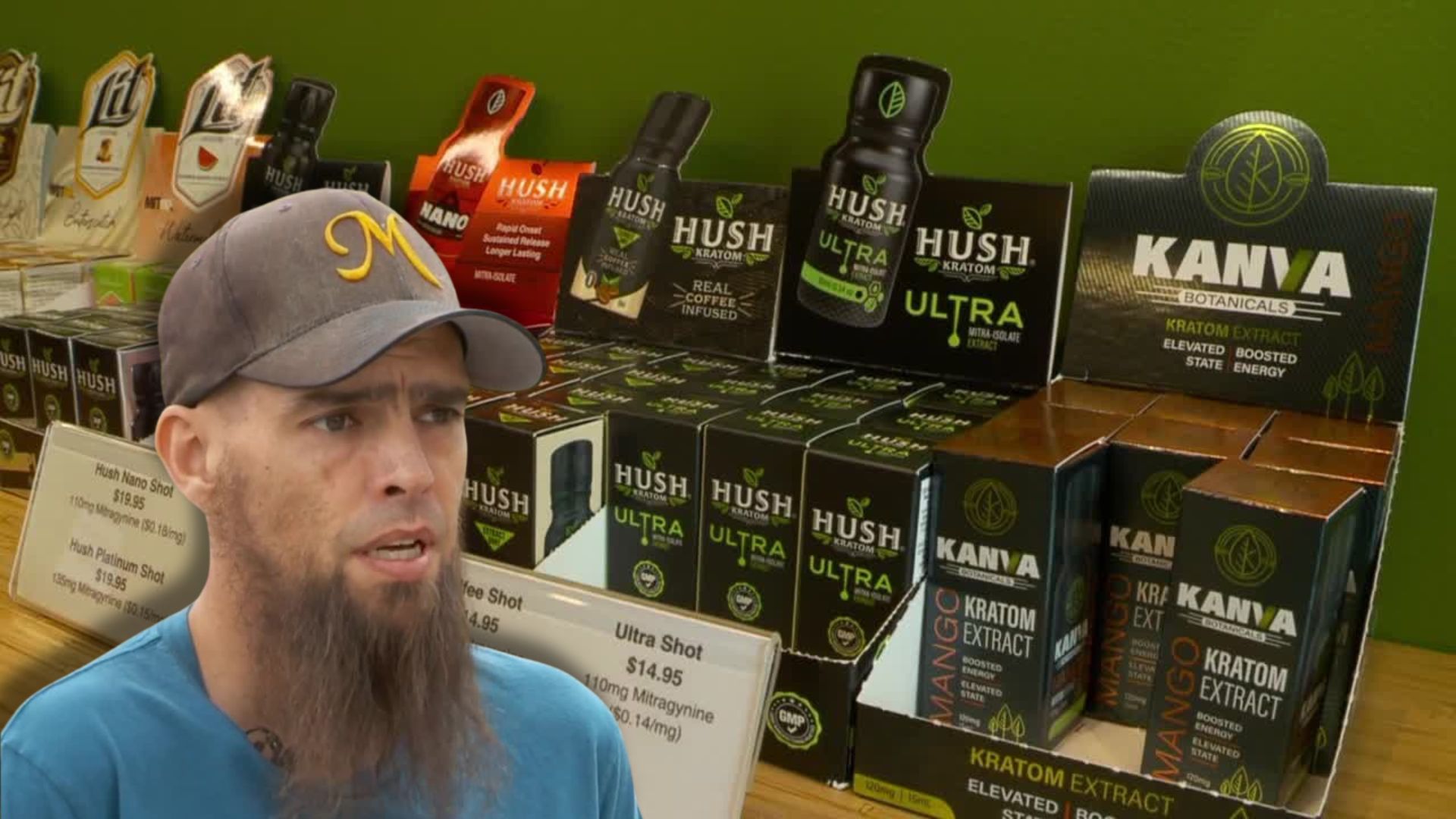SALT LAKE CITY — A Utah veteran says kratom helps him manage pain. But health experts warn it’s risky — and now Utah’s part of a nationwide debate over how to regulate it.
For Thor Bebout, living with daily pain means finding alternatives. “Being a disabled veteran, I do take when it’s needed,” Bebout, a veteran living with disabilities said.
Kratom is a supplement made from leaves of a tropical tree that grows in Southeast Asia. It’s legal in Utah and most of the country and is sold in different forms. It’s used for things like pain relief, energy, and relaxation. Some use it to try to ease withdrawal symptoms.
“It relaxes me. I refuse surgery, and I refuse taking pills. I always prefer a holistic approach versus a manufactured approach,” Bebout said.
C. Michael White with the University of Connecticut School of Pharmacy says the real danger isn’t the natural kratom leaf itself, but a compound called 7-Hydroxymitragynine, also known as 7-OH, a powerful compound in some kratom products that can act like an opioid and be addictive.
“The 7-OH product is equally as potent of an opioid as morphine,” White said. “It’s at least giving you the same types of effects that you’re getting from other opioid products. Like rapid development tolerance."
Here in Utah, lawmakers are considering new restrictions. The state already caps 7-OH levels at 2% in kratom products and bans synthetic alkaloids. A new proposal would require kratom retailers to get permits, ban packaging that appeals to children, and add warning labels that products may be habit-forming.
“That’s why the FDA is so concerned because they know they would never take morphine, and they would never take oxycodone and then sell it to people at a gas station,” White said.
For now, Kratom is legal in Utah and across most of the U.S. but with states and the FDA stepping in, the fight over its risks and how to regulate it isn’t going away anytime soon.
“The sad part is that for a lot of people, it wasn’t their fault, it was misrepresented to them,” White explained. "And they went into it thinking what the risks were when they really didn’t and now, they have to deal with the consequences.”




